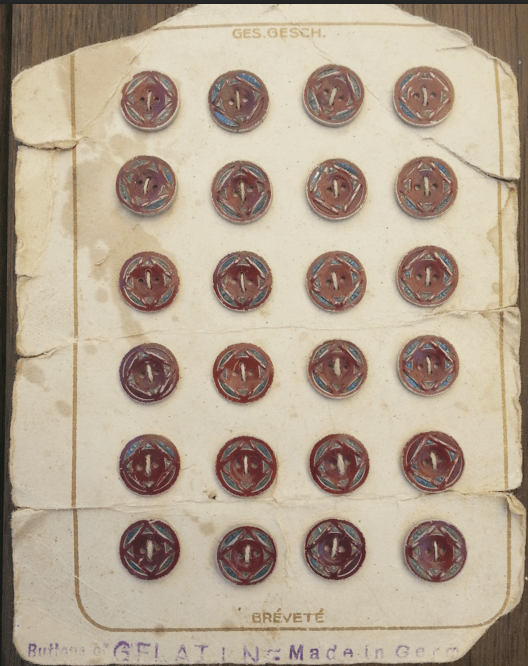Update on Bone buttons
See also http://www.austbuttonhistory.com/29th-august-2021/
Bone was not only sliced and cut into ‘blanks’, it was also ground up. Processed horn (ground horn mixed with adhesive then moulded) may show a ‘pick mark’ on the back where the button was prised from the mould. Bones were also used to make the buttons shown below. It is marked “Buttons of Gelatin. Made in Germany”.

The buttons are small, a little less than 1cm in diameter.
I was puzzled as to how gelatin buttons were made. Gelatin is an animal product rendered from the hides and bones of animals, typically pork skins, pork, horses, cattle bones, and split cattle hides. The production of gelatin starts with the boiling of bones, skins, and hides of cows and pigs, a process that releases the protein-rich collagen from animal tissues. The collagen is boiled and filtered numerous times, dried, and ground to a powder. Presumably the buttons are pressed from this powder.
The term ‘Ges. Gesch’ at the top of the card is an abbreviation for ‘Gesetzlich Geschutzt’ a German equivalent to the term ‘patent’ and also similar to the French ‘Bréveté’ which appears on the bottom of the buttons. The term may have been used from the last quarter of the 19th century until the 1960s, but I’m not sure.
For any comments or queries, please use the Contact page.
